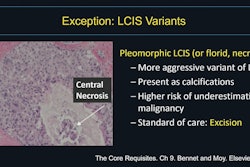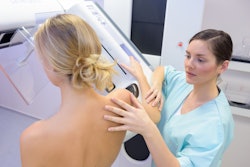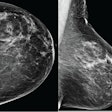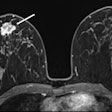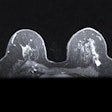Female veterans are as likely to undergo screening mammography as nonveteran women, suggest findings published April 24 in the Journal of the American College of Radiology.
Researchers led by Arissa Milton from the University of Wisconsin in Madison found through their nationally representative survey that nearly 1.2 million female veterans and over 2.1 million women with military health coverage are eligible for mammography screening.
“Radiology practices should design proactive outreach strategies to address the needs of veterans who may face increased breast cancer risk due to military environmental exposures,” Milton and colleagues wrote.
Women are among the fastest-growing group of veterans across all military branches. The researchers suggested that female veterans may face unique risks from breast cancer due to military environmental exposures. They also noted a lack of data about trends in mammography screening uptake by female veterans.
The Milton team evaluated associations between mammography screening and veteran status. It included data from the 2019 National Health Interview Survey, focusing on data from women ages 40 to 74 and stratifying it by veteran status.
Final analysis included data from 8,996 female survey respondents who met the inclusion criteria. Of these, 169 reported being veterans (1.9%, estimated 1,190,169 women) and 320 reported having military health coverage (3.2%, estimated 2,156,863 women).
Female veterans showed comparable screening mammography uptake within the last year to that of female nonveterans (57.9% vs. 55.2%). And not having health insurance coverage was significantly tied to decreased mammography screening percentages (odds ratio [OR], 0.296; p < 0.001), the team reported.
Women with military health coverage had higher reported screening mammography uptake within the last year compared with women with nonmilitary health coverage (65.7% vs. 57.7%). The researchers also found that health insurance coverage was significantly associated with increased mammography screening percentages (OR, 1.409; p = 0.009) on unadjusted analyses.
And VA health insurance was not linked to significant differences in mammography screening percentages.
Finally, the team found that the following patient-level factors are significantly associated with screening mammography and veteran status: insurance coverage, Hispanic, Black or African American, education, marital or domestic partnership status, income, and age (all at or > 0.001).
The study authors called for future research to investigate the impact and accessibility of screening and diagnostic breast imaging facilities. They also called for future work to evaluate strategies to improve access to mammography screening for veterans and active-duty military personnel.
The authors also highlighted the Supporting Expanded Review for Veterans In Combat Environments (SERVICE) Act and the Honoring our Promise to Address Comprehensive Toxics (PACT) Act, both of which were signed into law in 2022 to address the potential impacts of military environmental exposures.
“The SERVICE Act has recognized the need for tailored outreach and guidelines as well as expansion of breast cancer screening eligibility specifically for women who served in certain combat locations,” they wrote.
The full study can be accessed here.







